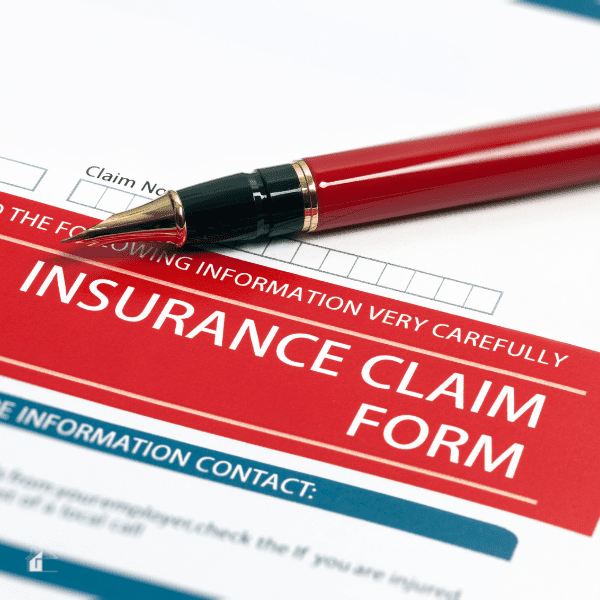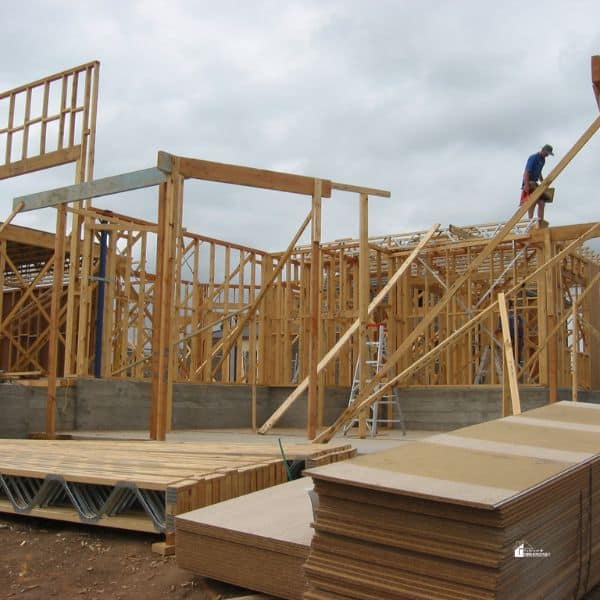The Worst Could Happen: Common Home Insurance Claims to Know
This post may contain affiliate links which might earn us money. Please read my Disclosure and Privacy policies hereAfter signing your life away in the mounds of loan papers for your first home, you probably thought you didn’t have to worry about anything else.
Think again.
Homeowner’s insurance is a requirement your lender probably insisted you get before the papers could be signed, but they were more interested in protecting their investment than yours.
Knowing what your insurance covers is important, but so is knowing you have the right amount of coverage for what you least expect.
In a review of homeowners’ insurance claims in 2020, a major homeowner’s insurance company found the following to be the top five claims made by homeowners.

Exterior Wind Damage
While controlling the weather is a little hard to do unless you are one of the X-Men, there are things that you can do that will lessen the risk of wind damage to your property:
- Removing any dead tree limbs that hang over your house will prevent them from being blown onto your roof, vehicles or property in a severe windstorm.
- You might also consider installing storm shutters that will protect your windows from any flying debris that could break the glass. Most can be tucked out of the way during good weather.
Check out these posts:
- Spring Checklist: 7 Home Maintenance Tips
- 12 Environmentally Friendly Home Improvement Ideas for the Summer
- Over 10 Important Tips For Preparing for a Hurricane on a Budget
- 6 Tips For Keeping Your Home Clean After Spring Cleaning
Hail
Hail will most often cause damage to your roof, but it will also damage wood, aluminum and vinyl siding. It can break windows too. If your roof is damaged significantly, it can later contribute to water damage within your home by allowing rain, snow, or ice to get under the shingles. If you suspect your roof has been damaged after a hail storm, have it inspected by a qualified roofer.
Water Damage Related to Weather
If water can find a way into your home, it will do its best to get there. Some roof leaks may have started years before you purchased your home but suddenly you will see a wet water stain on the ceiling.
Excessive rain, snow, ice and spring thaws can all cause weather-related water damage to your home. Make sure to check with your insurance policy to find out if there are specific weather-related water damages that will not be covered and if you can get a supplemental policy to cover it.
Making sure your rain gutters stay clear of leaves and other debris, and that they drain water away from the foundation of your home, will help prevent some damage from water.
Water can also come in through flooding. If your home is located in an identified flood zone, your mortgage company may or may not have required flood insurance, which is purchased apart from your normal homeowner’s insurance.
Water Damage Unrelated to Weather
Water damage in the home can be caused by broken pipes, backed-up septic systems, overflowing bathtubs and sinks, or appliances such as hot water heaters, washing machines and dishwashers that suddenly go haywire.
When these problems become chronic or aren’t caught right away, there is a risk of mold growing where it may not be seen or found for some time.
Having the plumbing system in your home inspected periodically can help prevent some claims by finding problems before they become problems.
Low water pressure can indicate a broken pipe, and old water heaters frequently have sediment deposits inside the tank that can corrode over time and cause leaks. Water hoses to your washing machine are also one of the prime suspects for water damage.
Think of a routine plumbing inspection as being similar to getting a yearly physical from your doctor.
Theft
It would be difficult to dig a moat around your home, and hard to find a homeowner’s association that would overlook a fire-breathing dragon. But there are easier ways to protect your home from theft, and most of them are simple habits to get into on a daily basis.
Making your home appear uninviting to someone considering breaking in can include planting thick shrubs that have thorns in front of windows.
What to Know About Liability Claims
Your homeowner’s insurance will cover liability claims for injury from people who may be your friends, relatives or employees, but you should still be sure that you have sufficient coverage. To help protect yourself from a claim, there are some precautions you can take. This includes consulting with a personal injury lawyer in Phoenix (or elsewhere) to fully understand your legal responsibilities and options. Make sure you understand the different types of coverage that cover dangers.
Dog Bites
If your dog or another pet brought into your home bites someone, you can be held liable for damages and injuries. There are some dog breeds that insurance companies are particularly wary of, so check with your company to find out which ones.
Accidents on Your Property
You could be liable for any injuries that occur on your property. While you can’t put a protective bubble around everyone who comes to visit, taking preventative measures such as tacking down the carpet or salting and shoveling your walk could also keep you from being injured.
Falling Trees
If your tree falls on your neighbor’s fence and destroys it, but no one hears it, did it really happen? Yes, it did, and you could be liable for repairs or replacing the fence.
Chances are you will never need to worry about any of these issues, but by being proactive and taking some precautionary measures, even if the worst did happen, you’d be covered.
Anum Yoon is a personal finance writer who is dedicated to sharing her insights on money management with others. She believes that a greener, energy-efficient lifestyle is the key to living a more fulfilling life. When she’s not typing away on her keyboard, you can find her poring over a new recipe she found on Pinterest or at the power rack in her gym. Catch her on Twitter or sign up for her newsletter here to find out what she’s sharing!







6 Comments